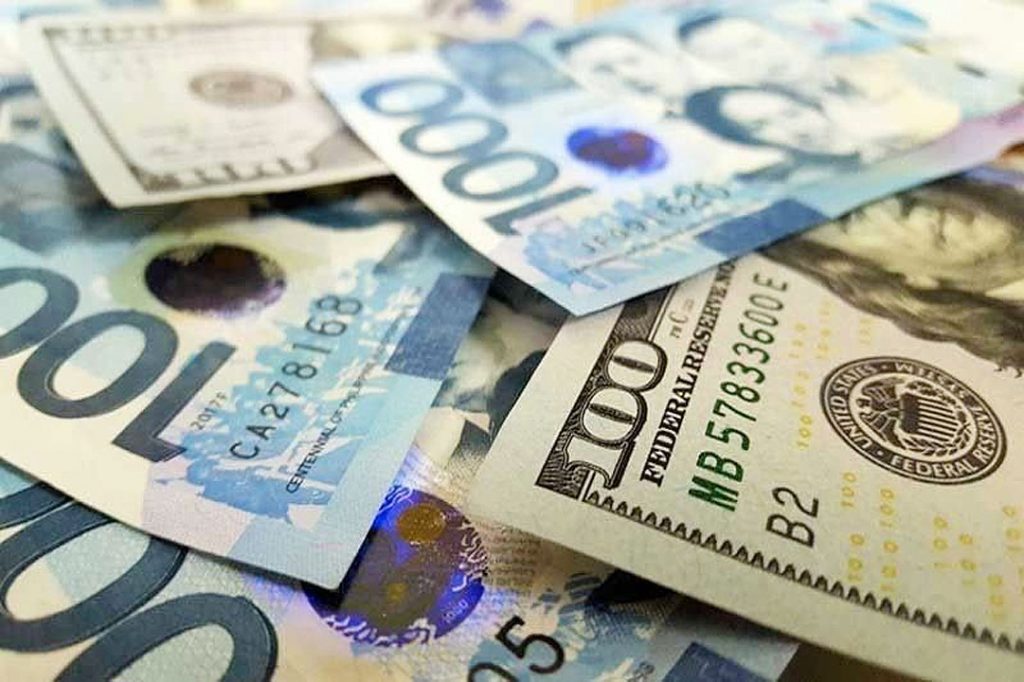




Philippines Trade Update: Exports momentum continues
 DOWNLOAD
DOWNLOAD

Quarterly Economic Growth Release: More BSP cuts to come
 DOWNLOAD
DOWNLOAD

Monthly Economic Update: Fed catches up
 DOWNLOAD
DOWNLOAD


Peso slump could derail rate cuts

The peso weakness could impact the Bangko Sentral ng Pilipinas’ (BSP) policy easing cycle even after inflation has settled within target for a sixth straight month in May, analysts said.
“The recent weakness of the Philippine peso poses a significant challenge for the central bank as it navigates its monetary policy,” Security Bank Corp. Chief Economist Robert Dan J. Roces said in a Viber message.
In May, the peso sank to the PHP 58-per-dollar level for the first time since November 2022. Since then, the BSP has intervened in “modest” amounts to keep markets orderly.
The peso closed at PHP 58.68 per dollar on Tuesday, strengthening by 11 centavos from its PHP 58.79 finish on Monday.
“From how the (peso) has been performing lately, we think that (peso) movement/performance is what the BSP will prioritize,” Union Bank of the Philippines, Inc. Chief Economist Ruben Carlo O. Asuncion said in a Viber message.
GlobalSource country analyst and former BSP deputy governor Diwa C. Guinigundo said that a weak peso may contribute to stronger price pressures. “That should make monetary policy more cautious about an early easing,” he said in a Viber message.
“A depreciating peso could amplify inflationary pressures by increasing the cost of imports, potentially constraining the BSP’s ability to ease policy,” Mr. Roces added.
Headline inflation quickened to 3.9% in May from 3.8% in April but marked the sixth straight month that inflation settled within the BSP’s 2-4% target band.
Inflation averaged 3.5% in the first five months, matching the BSP’s full-year forecast.
If inflation continues to settle within target despite upside risks, Mr. Guinigundo said that the BSP may start cutting rates.
“This confidence should be communicated well and in the proper context of successful inflation management. That should convince the market that BSP is not just being too aggressive but is well grounded in its policy decision to ease. Speculation in the (foreign exchange) market will be minimized, if not totally pacified,” he said.
Mr. Guinigundo said that peso weakness can be minimized if the central bank “will continue to emphasize the encouraging trend of inflation and an ultimate within-target reading of the average inflation by the end of the year.”
BSP Governor Eli M. Remolona, Jr. told Reuters Global Markets Forum on Tuesday that the central bank is less hawkish than before but is still firm on wanting inflation to settle near the middle of the 2-4% target.
He earlier said that the BSP could begin cutting rates as early as August.
Meanwhile, Mr. Roces noted that cutting ahead of the US Federal Reserve may be risky and could also impact the peso.
“Furthermore, lower interest rates ahead of the Fed could widen the interest rate differential, risking capital outflows and further currency depreciation,” he said.
“This scenario demands a delicate balance: while the BSP has some leeway to support domestic growth through rate cuts, it must carefully manage the consequences on inflation and investor confidence.”
Mr. Remolona has said that while the BSP monitors the Fed’s moves, its own monetary decisions are independent of the US central bank. The BSP also does not need to wait for the Fed to begin its own easing cycle, he said.
Meanwhile, Jonathan L. Ravelas, senior adviser at professional service firm Reyes Tacandong & Co., said that inflation still remains the key indicator to watch before any rate cut.
“We need to see a steady decline in inflation expectations as well as the headline number to see a cut in August. The next two months are critical to see the inflation trend to trend lower,” he said in a Viber message.
The BSP earlier said that inflation could temporarily breach the 2-4% target until July due to base effects.
“The timing and size of the BSP rate cuts will be driven by our gross domestic product’s (GDP) soft patch because of higher real interest rates, and fiscal spending constraints, followed by the US Fed’s timetable,” Mr. Asuncion added.
GDP grew by 5.7% in the first quarter, faster than the 5.5% a quarter earlier but slower than the 6.4% a year ago.
The government is targeting 6-7% growth this year. — By Luisa Maria Jacinta C. Jocson, Reporter
This article originally appeared on bworldonline.com





 By BusinessWorld
By BusinessWorld